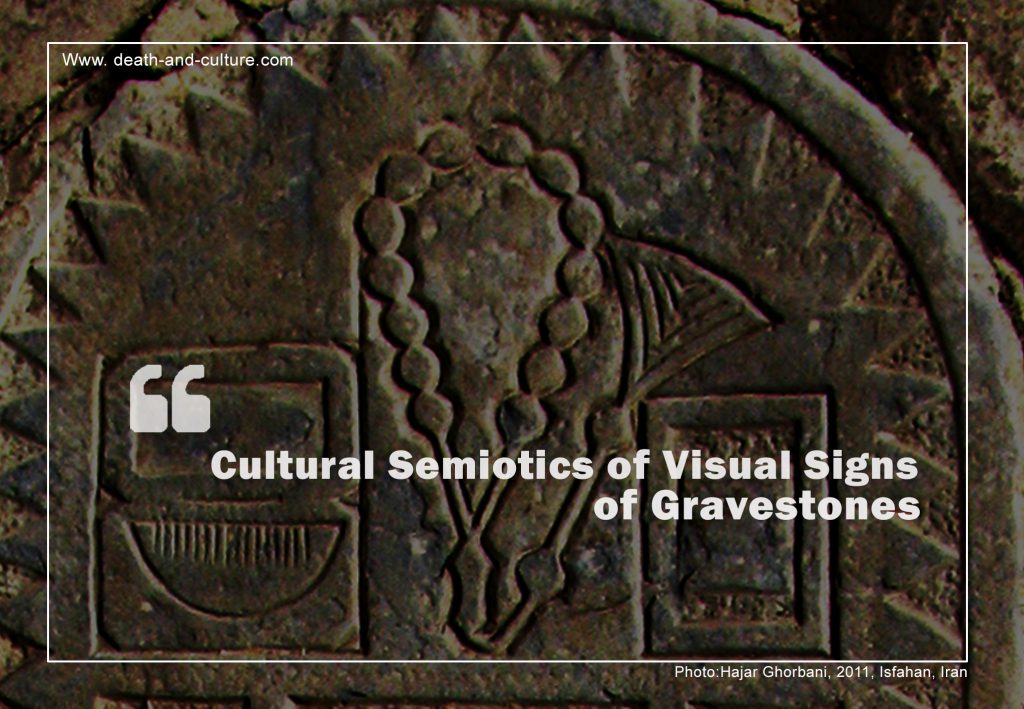
This paper (presentation) is a part of my fieldwork in Isfahan Takht-e Fulad cemetery in 2011.
The Takht-e Foulad cemetery is located in Isfahan and the south of Zayandeh-rood River. This cemetery took its power from the Safavid dynasty, which was a Shiite dynasty. [Azimi, 1379 AP., p.193]. The gravestones in Takht-e Fulad are of three kinds: horizontal or horizontal box and flat, mast and horizontal beside each other) Moreover, it is divided into two main parts (surrounded by Takaya and open.).
The signs on the gravestones in this cemetery can be divided into two signs, including visual signs and textual signs. By observing the pictorial and textual signs on the gravestones in the Takht-e fulad and interpreting them, what is revealed at first is that these signs express the job or profession of the deceased person. To find more precise meanings for these signs, we should find out the cultural relationship of these graphic patterns besides other signs on the gravestone. Combs are carved along with turbah, rosary, and some other signs, in some of the gravestones in this cemetery.
In the logic of determining the signs on the gravestones, the issue of being literate or illiterate in traditional culture is of great importance. So it seems in the era in which most people were illiterate. The text on the gravestone was a sign of the higher dignity of the deceased person, the best way to convey some information about the deceased person and his/her profession, and some other essential traits of that person, especially in the domain of religious values, was pictorial signs. In the past, signs like a wooden comb, rosary, and turbah were the distinguishing religious factors, and this was because of the presence of religious minorities in the city (Zoroastrians and Armenians).
For reading the whole paper please click: Cultural Semiotics of Visual Signs of Gravestones in Isfahan Takht-e Fulad cemetery